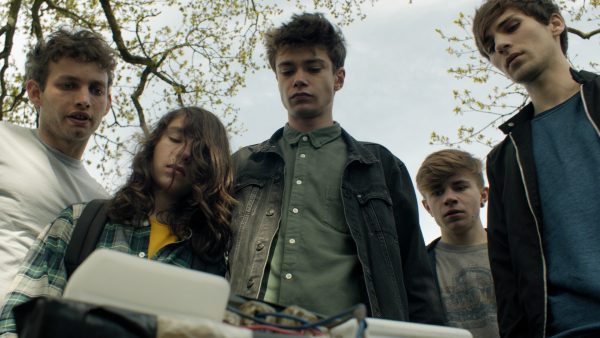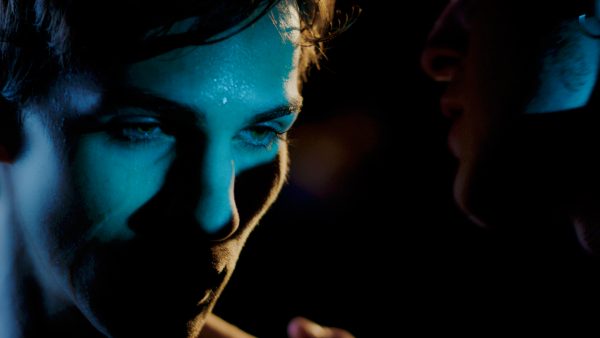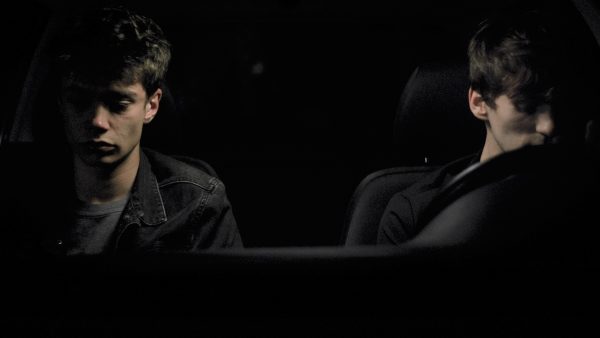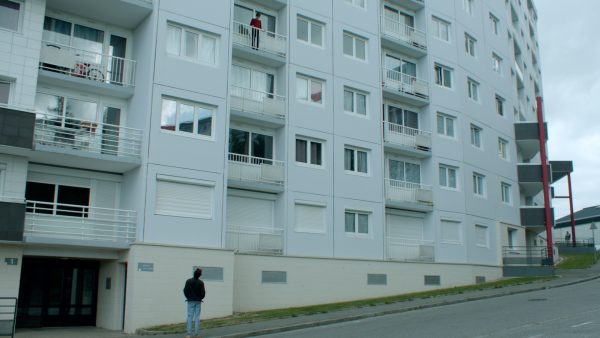In total four kids die during the course of Permanent Green Light (2018), Dennis Cooper and Zac Farley’s second feature film as writer and director, which premiered at Rotterdam International Film Festival in January. The protagonist, Roman, is a French teenager planning his own spectacular suicide. His preparation is concerned with finding the right mode to die, as if he were choosing the perfect filter for a selfie. It can’t be too clichéd, too obvious, or too normal.
Roman, is on the cusp of maturity – his hair is fluffy and his friends still have acne – and he spends most of his time in his bedroom re-watching explosion scenes with the volume turned to full, troubling his sister in the room next door. As part of the planning process, he arranges to meet León, a calm but intense teenager who collects suicide vests. ‘If only I could think of a reason’, she confides in him, days before she kills herself by jumping off a building. Like León, Roman doesn’t have a reason either, but says he doesn’t need one. His perspective brings to mind the writing of Franco ‘Bifo’ Berardi, whose 2015 book Heroes: Mass Murder and Suicide looks at spectacular suicide and murder-suicide as an ‘answer’ to the alienation and anxiety-inducing competition of capitalism.
Permanent Green Light is indebted to Robert Bresson’s The Devil Probably (1977), which follows the trials of Charles, a young Parisian disillusioned after the student protests of 1968, as he defeats attempts by his friends, therapists and activists to dissuade him from suicide. At first I didn’t realise the connection – perhaps I’d been distracted by the beauty of Cooper and Farley’s ripe young actors, caught in a love circle around an unreachable protagonist as he works out how to explode perfectly without leaving a trace – but it’s an obvious precursor.
Throughout the film, Roman becomes a symbol of his friends’ unmet desire for him, resisting each of their attempts at closeness. Some of the best lines land as he casually dismisses human intimacy (‘…you seem like you love me. Which is nice but kind of weird’) and natural forces like the sun, which he says we only notice ‘when things are lit’. His rebuffs are followed by charged scenes of these friends crying to themselves; caught in rapturous dance, or consumed by sorrow and awe. As the film progresses they begin to acquiesce to his suicidal plan, becoming excited for him and, latently, for the public dissolution of their own fantasies. Where Bresson’s lead is shot in the back by a junkie he paid to be his accomplice, Roman performs the final act to his friends as spectators, rather than as witnesses. The filmmakers match his sense of detachment, recording their reactions from Roman’s perspective twenty feet away.
Roman’s encounter with León is the first and only time he shows empathy, as the roles are reversed and he needs to come up with a reason for her not to die. It is also the only time he touches anyone. He lifts her sweater revealing the explosives secured underneath, returning us to the volatile sexual tension more closely associated with Cooper’s writing.
Cooper is best known for his semi-autobiographical series of novels George Miles Cycle, published between the late 1980s and 2000, which established his unique and consistently ruthless voice, and his use of emetic narratives of gay sex and violence to unravel exceptional insights into human relationships. In 2016, his Gmail account and blog – which he’d been adding to daily for fourteen years, with graphic sexual material and long-form tributes to his artistic mentors (including Bresson) – was taken down by Google, only to be restored two months later after public outcry from his fans. The temperature of Permanent Green Light is certainly cooler than Cooper’s earlier writing, but his filmic expression of loneliness and desire shows that the image can be just as promiscuous as his lust-driven prose.
The Devil Probably is much less nihilistic than Permanent Green Light, which surrenders to our renewed nuclear threat rather than becoming any sort of martyr to it. Cooper and Farley’s film is an echo-filled love song for a headphone-wearing, screen-dependent generation. Where Bresson’s Charles stubbornly protests that it’s ‘our strength’ which unites us in resistance, Roman obsesses out loud about wanting to become ‘the particularity of the explosion’, which he hopes people will applaud him for. He has literally and ecstatically learnt to stop worrying and love the bomb.
share
ABOUT THE CONTRIBUTOR
Shama Khanna
is a curator, writer and educator based in London. She teaches at Kingston University and University of the Arts, London, co-edits the publication A-or-ist and is a Trustee of not/no.w.here co-operative. Her long-term research is Flatness.








